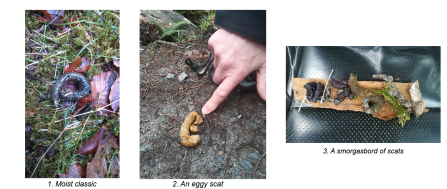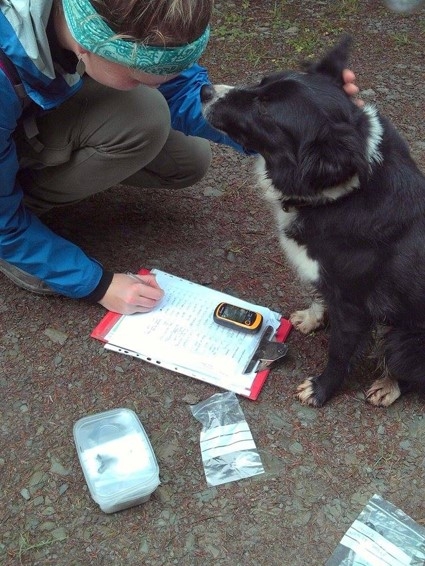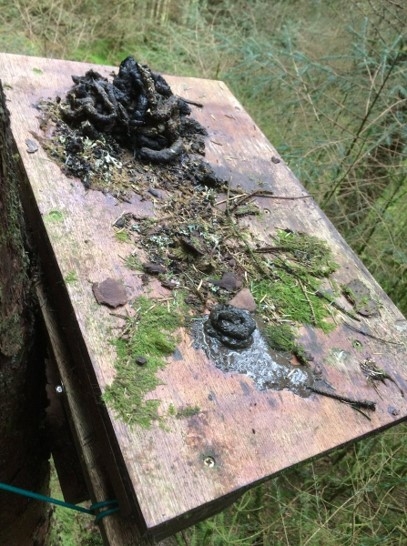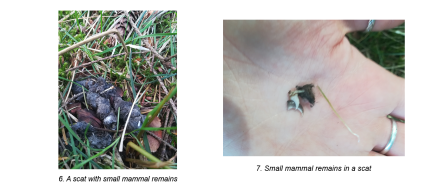Biology of scats…
Marten poo, like that of many carnivores, is known as scat and is one of the easiest ways to know that you have martens in town (1). As well as being a necessary biological function, martens also use scats to communicate between each other and other species. Martens are strictly territorial and won’t tolerate another animal of the same sex on their patch. But they do also like to avoid conflict where possible, so by laying scats throughout their territory they can clearly mark it to any passing martens that this seat is taken. Their strong-smelling anal secretions can give a clear message to other martens about their sex, condition and reproductive state (2).
Marten scat is very distinctive and, if you know what you’re looking for, is easy to tell apart from other mammals in the area. Its main descriptor is that they are a dark, coiled, continuous squiggle that is generally 10-13 mm wide and 80-120mm long (3). Mustelids have a different digestive system and gut to many other carnivores and this creates a very mucousy scat that tends to stay in one long piece, as opposed to canid scat that generally breaks up. The most freshly deposited scats are known as ‘Moist Classics’ and are dark, long, slim and slimy and tend to contain lots of small mammal remains (Picture 1). If a marten has been eating lots of eggs the scats become much lighter and softer (Picture 2), a late summer scat will be filled with berries and can look lumpy and purple, and, of course, anywhere where people are baiting to encourage the martens their scats are often filled with peanut pieces (Picture 3) .





